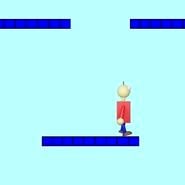

Pink is a minimalist puzzle game that challenges players to find creative solutions using logic, pattern recognition, and an understanding of color theory. Each level is a unique puzzle wrapped in sleek design.
More Than Just a Color
Despite its name, Pink is more than a visual concept — it’s a puzzle theme. Each level presents a seemingly abstract arrangement that must be solved to progress. There’s no instruction or guidance, just the challenge of figuring out how the puzzle reacts to your interactions. Players must explore, experiment, and deduce the correct pattern or trigger to turn the screen entirely pink.
Whether it’s clicking, sliding, holding, or sequencing, the solution is always within reach, but not always obvious.
How to Approach the Levels
In Pink, no two puzzles are the same. You must examine each level carefully and look for clues in the shapes, motions, and sounds. Here are a few common strategies that help players get through:
- Click different areas to test for interactivity — some elements are hidden until tapped.
- Look for symmetry or repeating shapes that may suggest a pattern.
- Hold rather than click — some levels react to press duration.
- Remember previous mechanics — they may reappear in more complex forms.
The game never explains the rules, so attention to detail is your best tool. The more you play, the more you’ll begin to see the logic hidden beneath the abstract design.
What Makes Pink Stand Out
Pink stands apart from traditional logic games due to its simplicity in presentation and depth in execution. Its challenges do not rely on speed or reflexes, but rather on lateral thinking. There’s no time pressure, allowing players to fully immerse themselves in the puzzle-solving experience without stress.
Some standout features include:
- Non-linear logic: Many puzzles don’t follow typical rules and reward experimentation.
- Musical cues: Subtle sounds may provide hints on what action is correct.
- Elegant design: Minimalist layout that puts full focus on interaction.
Ideal for Thoughtful Players
If you enjoy discovering how things work without instructions, Pink is built for that mindset. It appeals to players who prefer exploration over tutorials, and those who appreciate problem-solving without pressure.
Each stage of Pink encourages a different way of thinking. While some puzzles require spatial reasoning, others lean heavily on sequencing or observation. The diversity in puzzle types keeps the experience fresh through the entire game.
Pink is a cerebral game designed for quiet moments of focus. It rewards patience, observation, and a willingness to play with the unknown until the solution reveals itself.





















